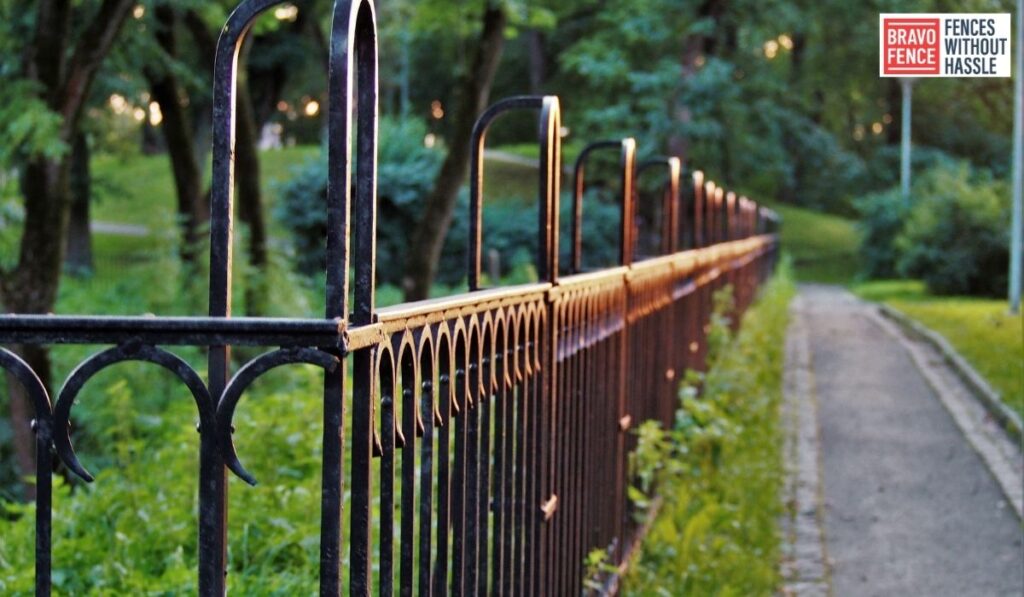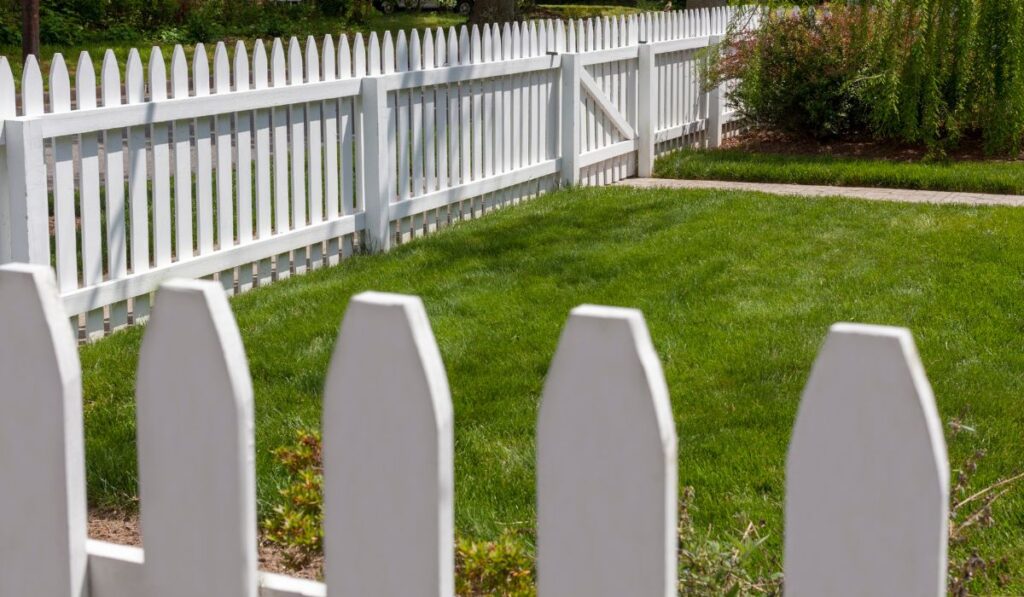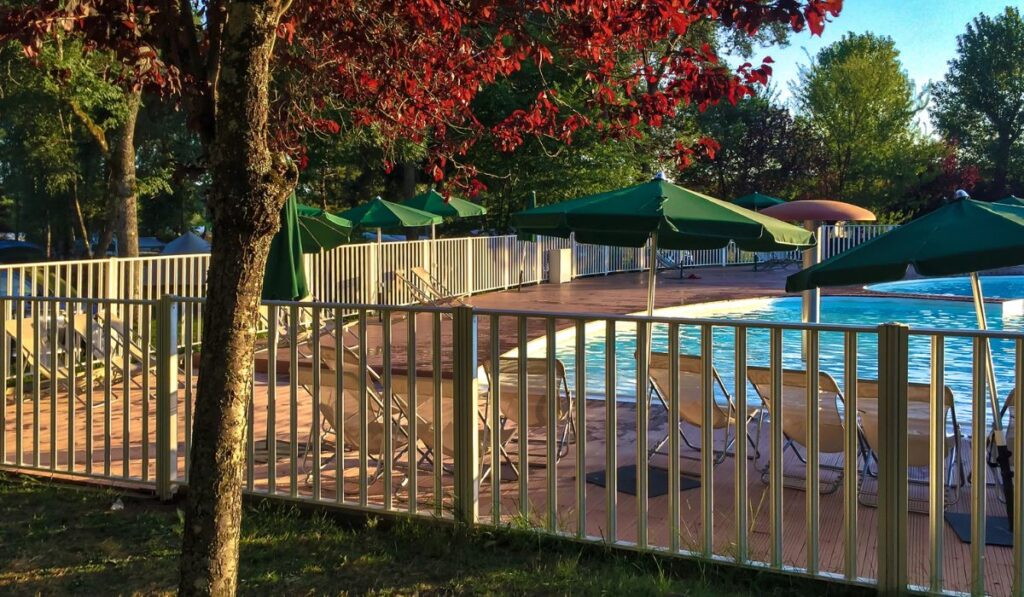Thanks to their durability, security, and aesthetic appeal, metal fences have become a popular choice for homeowners and businesses alike.
Installing a metal fence can enhance the look of your property and provide essential security and privacy.
However, planning and executing the installation correctly is essential to ensure it serves its purpose effectively and looks great.
This comprehensive guide will walk you through the crucial steps and considerations for a successful metal fence installation.
Planning Your Metal Fence Installation
Before diving into the installation process, planning your metal fence project thoroughly is crucial.
This planning phase can save you time, money, and potential headaches.
Here are the key considerations during the planning stage:
Purpose of the Fence
Determine why you are installing the metal fence.
Are you aiming to improve security, add privacy, enhance curb appeal, or mark property boundaries?
Understanding the purpose will help you choose the right type and design of metal fence.
Local Regulations
Check with your local municipality or homeowner’s association to see if any regulations or permits are required for installing a fence.
Compliance with local rules is essential to avoid legal issues in the future.
Fence Design and Material
Select the type of metal that suits your needs and aesthetic preferences.
Common choices include wrought iron, steel, aluminum, and chain-link.
Additionally, decide on the design, such as ornamental, picket, or privacy fencing.
Budget
Set a realistic budget for your metal fence installation.
Costs can vary based on the fence’s material, design, and dimensions.
Remember that professional installation can be more expensive but ensures quality work.
DIY or Professional Installation

Decide whether you’ll install the fence yourself or hire a professional.
Installing a metal fence can be a complex job; if you’re not experienced, it’s usually best to seek professional help.
A well-installed wall will last longer and provide better security.
Gather the Necessary Tools and Materials
Once you’ve completed the planning phase, you’ll need to gather the necessary tools and materials for the installation.
Here’s a list of items you’re likely to need:
- Metal fence panels or sections
- Fence posts
- Concrete or gravel for post-installation
- Measuring tape
- Level
- Post hole digger
- Screws or nails
- Drill or driver
- Gate Hardware
- Safety equipment (gloves, safety glasses)
Preparing Your Property
Before installing your metal fence, it’s crucial to prepare your property.
This step involves marking the fence line, clearing obstacles, and ensuring the ground is level.
Mark the Fence Line
Use stakes and string to mark the fence line according to your property’s boundaries.
Ensure it is correctly aligned with your plan and complies with local regulations.
Clear the Area
Remove any obstructions, debris, or vegetation that might be in the way of your fence.
A clear path makes installation easier and ensures a cleaner look.
Check for Utility Lines
Before digging any holes for fence posts, contact your local utility companies to check for buried lines like gas, water, or electricity.
Digging into utility lines can be dangerous and costly.
Level the Ground
Make sure the ground where the fence will be installed is level.
Uneven ground can lead to an unstable wall.
You should add or remove soil to achieve the desired level.
Installing the Fence Posts
Fence posts are critical to your metal fence, as they provide support and stability.
The method of installing posts can vary depending on the type of metal fence and the local climate.
Here are the general steps:
Digging Holes
Use a post-hole digger to create holes for the fence posts.
The depth and diameter of the holes depend on the height and weight of your fence.
Typically, holes should be at least one-third the height of the post and twice as wide as the post.
Inserting Posts
Place the posts into the holes and ensure they are level and aligned with the string marking the fence line.
You may need to use a group to ensure they are perfectly upright.
Adding Concrete or Gravel
Pour concrete or gravel around the posts to secure them in place.
Follow the manufacturer’s instructions for mixing and setting times.
Allow the bars to cure for the recommended period before continuing with the installation.
Attaching Metal Fence Panels
Once the posts are securely in place, it’s time to attach the metal fence panels.
The attachment method may differ depending on your chosen metal fence type.
Here’s a general guideline for connecting common metal fence panel types:
Wrought Iron and Steel Fencing
These types of fences often come in pre-fabricated sections.
Attach the panels to the posts using screws or brackets.
Ensure that they are level and properly aligned.
Aluminum Fencing
Aluminum fences are typically lightweight and easy to install.
They may have a rail and picket system or be available in pre-assembled sections.
Attach the areas to the posts using screws or brackets, following the manufacturer’s instructions.
Chain-Link Fencing

Chain-link fencing is assembled by unrolling the fabric along the posts and attaching it using tension bands, bars, and wire ties.
Make sure the material is stretched tightly and secure it to the posts.
Gate Installation
If your metal fence includes a gate, it’s essential to install it properly to ensure smooth operation and security.
Gate installation can be more complicated, so you may want to hire a professional for this project.
However, here’s a basic overview of gate installation:
Measure and Mark
Measure the gate opening and mark the position of the gate posts.
Make sure the posts are plumb and level.
Attach Hinges
Attach the gate hinges to the gate posts and then attach them to the gate frame.
Ensure that the gate swings freely and doesn’t sag.
Install Latch and Lock
Install the gate latch and lock mechanism according to the manufacturer’s instructions.
Make sure it functions correctly for security.
Finishing Touches and Maintenance
You’re almost done with your metal fence panels and gates securely installed.
Here are a few final touches and maintenance steps to consider:
Paint or Finish
Depending on the type of metal you’ve chosen, consider applying a finish or paint to protect it from rust and corrosion.
Regular maintenance in the form of cleaning and repainting can significantly extend the life of your metal fence.
Landscaping
Enhance the look of your fence by adding landscaping elements such as shrubs, flowers, or climbing plants.
This not only adds beauty but can also provide additional privacy.
Routine Maintenance
Regularly inspect your metal fence for any damage, loose fasteners, or signs of rust.
Repair or replace any damaged sections promptly to maintain the fence’s integrity.
Conclusion
In conclusion, installing a metal fence is a significant undertaking, but with careful planning and execution, it can significantly enhance your property.
From defining the purpose to finishing touches and ongoing maintenance, every step in the process contributes to the overall success of your metal fence installation.
Whether you aim for increased security, privacy, or curb appeal, a well-installed metal fence can be a valuable addition to your property.
FAQs
What are the benefits of choosing a metal fence over other materials?
Metal fences offer durability, security, and many design options. They are also low-maintenance and have a longer lifespan than other materials.
How do I determine the right height for my metal fence?
The fence’s height depends on its intended purpose. For security and privacy, consider a taller fence, while decorative or boundary walls can be shorter.
Can I install a metal fence on uneven terrain?
Yes, you can install a metal fence on uneven terrain. However, this may require special consideration and custom adjustments to ensure the border remains level and secure.
Do I need a permit to install a metal fence?
Local regulations vary, so checking with your municipality or homeowner’s association is essential. Some areas may require a permit, especially for fences over a certain height.
How do I maintain a metal fence to prevent rust?
Regular maintenance involves:
- Cleaning the fence.
- Removing rust with a wire brush.
- Applying a rust-resistant paint or finish.
Frequent inspections are also vital to catch any issues early.
What’s the typical lifespan of a metal fence?
The lifespan of a metal fence varies depending on the material used, climate conditions, and maintenance. In general, a well-maintained metal fence can last for several decades.
Can I install a metal fence, or should I hire a professional?
While it’s possible to install a metal fence as a DIY project, hiring a professional is often recommended, especially for complex or large installations. Professional installation ensures proper alignment and durability.
What is the best type of metal for a residential fence?
Aluminum and steel are popular choices for residential metal fences. Aluminum is lightweight and corrosion-resistant, while steel is known for its strength and durability.
Are metal fences customizable in terms of design and color?
Yes, metal fences are highly customizable. You can choose from various designs, colors, and ornamental elements to match your property’s style.
Can I add a gate to my metal fence, and how is it installed?
You can add a gate to your metal fence for entry and exit. Gate installation involves measuring the opening, attaching hinges, and adding a latch or lock for security.






